Fitbit One Review


The Fitbit One is the latest fully featured wireless fitness tracking device to make a splash in today's smart gadget market, and it's finally here to replace Fitbit's longstanding Ultra wireless fitness tracker with an all-new rain and sweat-resistant design featuring a devious sleep tracking and silent alarm capabilities, along with the usual pedometer features like keeping track of steps, calories burned, distance and the number of stairs you've climbed throughout your day. It sure looks the part from up here, but the real question is how well can it count when put thru the ultimate test? Catch out full, in-depth review of the One after the cut!
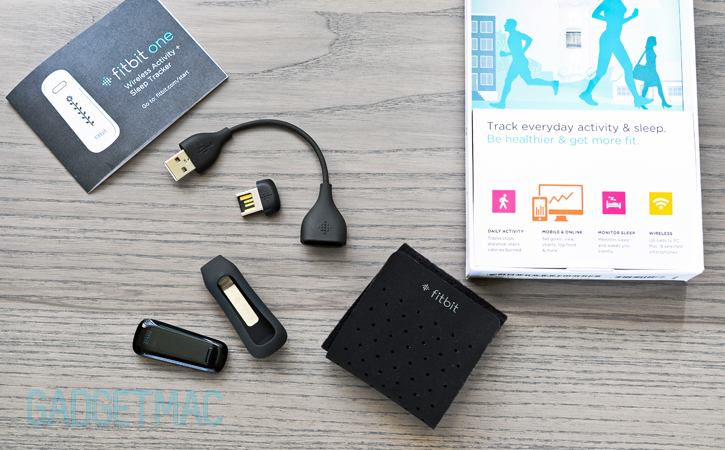
Fitbit's One would be a useless little piece of tech without the help of what's included inside the clean and easy-to-open packaging. The Fitbit One comes with a super simple getting started guide, a short proprietary charging cable, a wireless micro USB dongle, a matching silicone clip case and an adjustable sleep wristband where the One slips into in order to monitor your sleeping pattern and wake you up via the silent alarm feature. More on all of this further into the review of course.
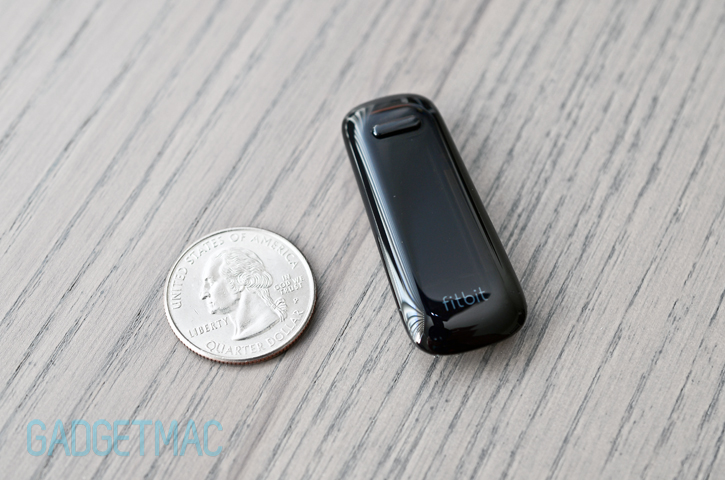
![]()
The Fitbit One is Fitbit's fully featured, all-can-do wireless fitness tracker that'll set you back $100 and comes in black or burgundy flavors; that's $40 more than Fitbit's new affordable Zip wireless activity tracker that strictly works as a nifty pedometer and nothing more. The Fitbit One on the other hand, is slimmer than its predecessor notably because it shed its clip-style design for a more streamlined pebble-esque body that would fit in your pocket unnoticed and look more professional and less fun. If you look at the state of pedometers currently available, Fitbit's One is one of the best looking fitness gadgets you can get.
What happens if you have no pockets? In that case, the included silicone made case cradles the One and is built with a silicone clad metal clip which can be attached to your pants, belt or sports bra. When you think about it, all the Fitbit One really amounts to is a repackaged Fitbit Ultra that's a little better looking and a lot sleeker. Literally.



The Fitbit One is made with a lightweight glossy plastic front and satin aluminum back that equates to your run-of-the-mill Bluetooth headset type of build quality. It's nothing impressive, but when slipped into the silicone clip case, it takes on a more assuring and protected little device. Fit and finish isn't exactly polished as it should as we noticed exposed flash and sharp areas around where the Fitbit One is snapped together in half.

We tested out the stand-out feature of the Fitbit One and that's the rain and sweat-resistant construction which low and behold does indeed pass the rain test with flying colors. As for using the Fitbit One by itself without its protective clip case, it doesn't look to stand much of a chance surviving a few good chest-level drops. Our first light drop resulted in nicked plastic as if it were made out of soft butter.
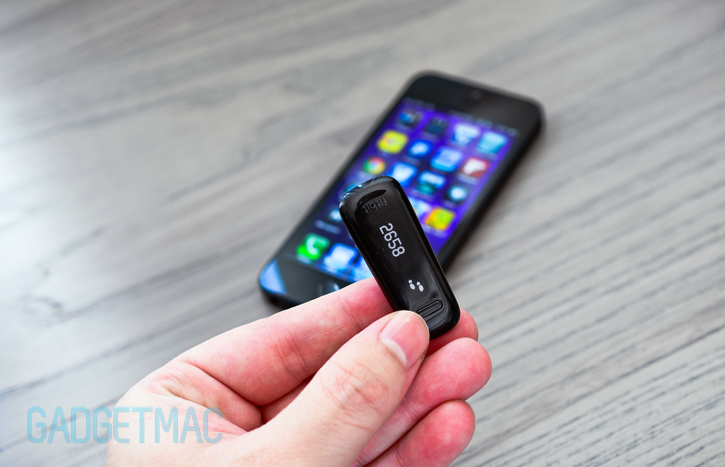
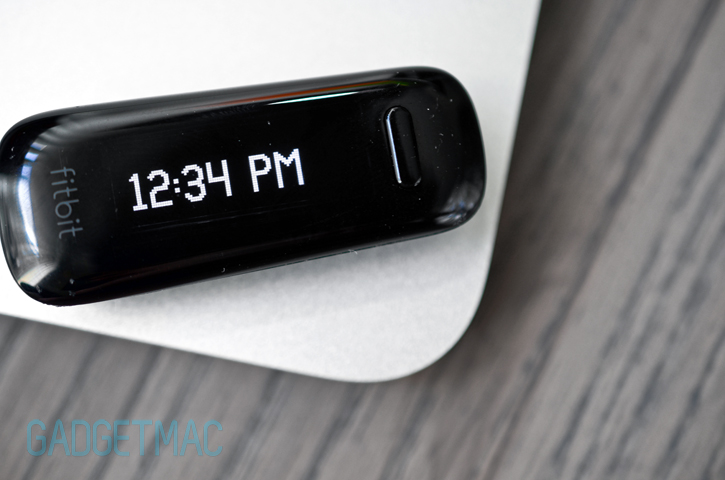

Hardware wise, the Fitbit One has it all. It packs a one-inch OLED display, Bluetooth 4.0, a MEMS 3-axis accelerometer, an altimeter, a rechargeable lithium-ion battery and last but not least a vibrating cylinder motor. Although the display is nice and bright during the day, you can't adjust the brightness or have it turned out infinitely.
The Fitbit One displays information in a few basic modes using its beautifully sharp and crisp, monochromatic OLED display hidden beneath the tinted black plastic which can be scrolled thru using the one and only button the One has that's located at the top. The things you can do while using the Fitbit One include viewing how many steps you've walked, how many flights of stairs you've climbed up, the distance of which you've walked throughout the day, the amount of calories you've burned, active silent alarms and of course a digital time display. What it doesn't display on board is your sleepage activity or let you adjust settings right from the device itself. You can view more info using the Fitbit app.
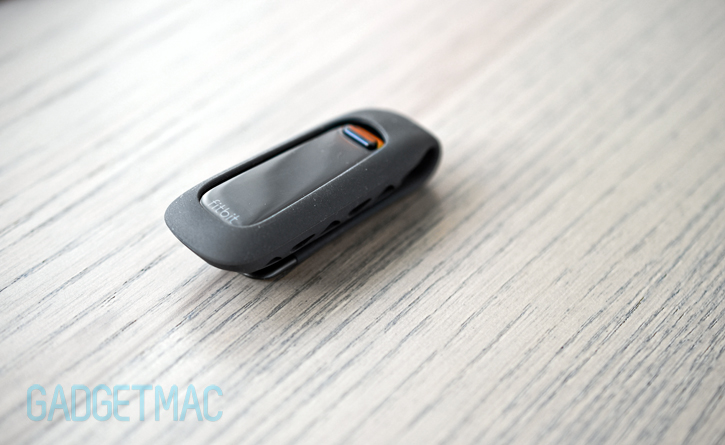
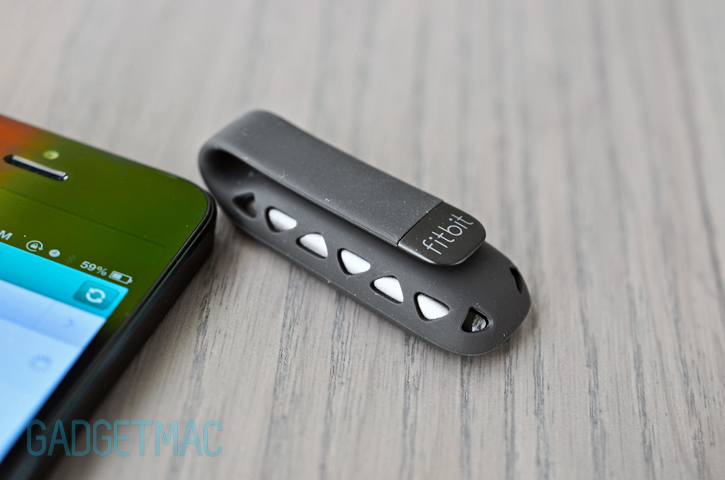
The silicone clip case is a pretty well made and seemingly durable accessory that will keep the One protected, but it'll also let you easily clip it onto your clothing. From our experience with using the included clip, we think it's best if to use it most of the time if not exclusively. While Fitbit claims you can simply keep using the One when it's inside your pocket, we actually got very inaccurate step counting results that way as oppose to a better counting performance while the One was attached to the front of or side of the waistline. The whole setup is super lightweight coming in at just .28oz (8g), so if you're worried about it getting in your way, don't.
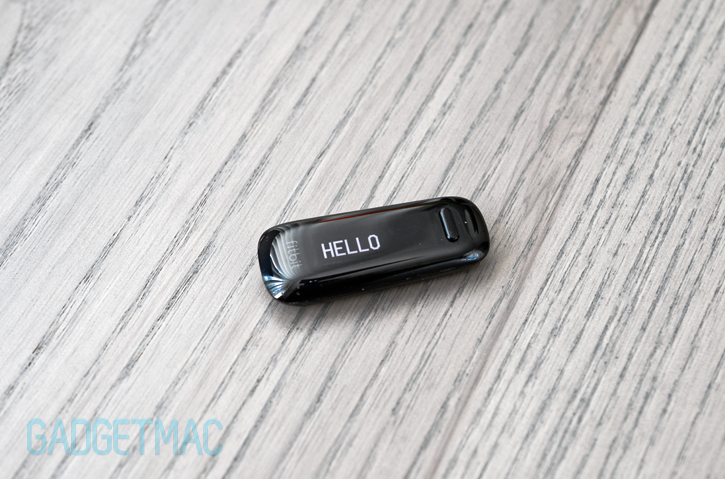
Getting started is a matter of waking up the One by plugging it in to the nearest USB port so to wake it up from a deep state of sleep as there's no on/off button. This is weird, you have to use the included wireless Bluetooth dongle even if you have a Bluetooth 4.0 built into your computer in order to sync the One. And you can't just sync while directly plugged in as Fitbit thought too much of the wireless sycning feature. But pairing it with your iPhone or iPod Touch is just as simple while the Fitbit app takes care of the seamless pairing process and guides you thru it with ease.


Each time you pick up the Fitbit One, it'll display a short motivational or a fun greeting followed by your name which can be set only thru the online Fitbit dashboard. There's a sunflower graphic that grows taller based on how active you are. Why use a flower?
![]()

Tracking your progress can either be done using the online Fitbit dashboard or by downloading the free iOS-only Fitbit app. Once paired over Bluetooth, the Fitbit One will wirelessly sync your personal daily stats in real time over to the Fitbit app which will later update your online statistics on your Fitbit account in the cloud. Alternatively you can download the Mac and PC compatible Fitbit Connect desktop app which will sync with the Fitbit One and will let you perform wireless firmware updates alongside the usual syncing of your daily progress. As of this review our Fitbit One is updated to the latest firmware available showing that it's running version 6.38.
As for tracking distance, steps and the number of stair flights you've climbed, the Fitbit One did a pretty good job counting close to accurate each and every time. As previously mentioned, the One will only work as it should if you find the sweet spot on where to attach it on your person with pocket carry having proving to deliver poor results. Alas, no pedometer will ever come close on delivering you a perfect and accurate count, it's not going to happen. The great thing about the Fitbit app is that each time you open it, it will instantly sync your stats and display them to you in greater detail than the One's limited OLED display.
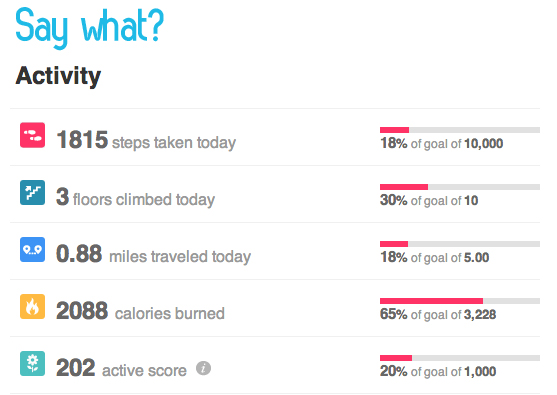
When we put the Fitbit One thru its paces, we came to a bitter reality when we started to notice some disturbing false statistics the little slick gadget spit our way. Calorie counting is completely inaccurate. Walking a mere 14 steps doesn't count as burning as much as 92 calories surely. And that's exactly what the Fitbit One displayed first thing in the morning. And just after displaying 62 steps and a good night's sleep, the Fitbit One displayed that I've apparently burned around 1,528 calories. 1,528 calories! Burned, that easily. In that rate I can let myself lose on a few delicious burgers each day, and later burn it all away without a single drop of sweat on my part.
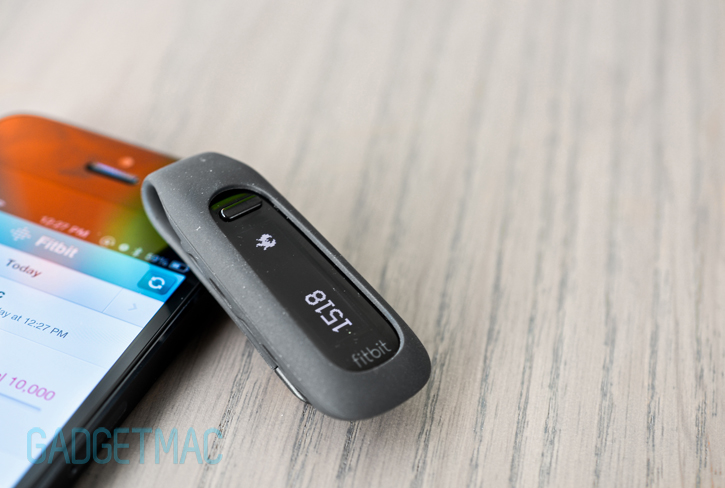
I then proceeded to use the One as I would normally, and just after walking 1,815 steps, the burned calorie meter yet again displayed inaccurate and false information. As a benchmark, the Jawbone Up fitness tracking wristband we reviewed displayed more realistic results which added to around 500 calories burned per 6,000 steps. We're not talking about the inaccuracy of merely a few calories as that would have been accepted, but instead a matter of hundreds of calories falsely counted that could make you think you've effortlessly burned off all of your Big Mac meal you had for lunch.
Sitting idle for around an hour logged as much as 57 burned calories. At this point, we're not sure if a simple software update can fix this ordeal or the internal hardware is completely bonkers.
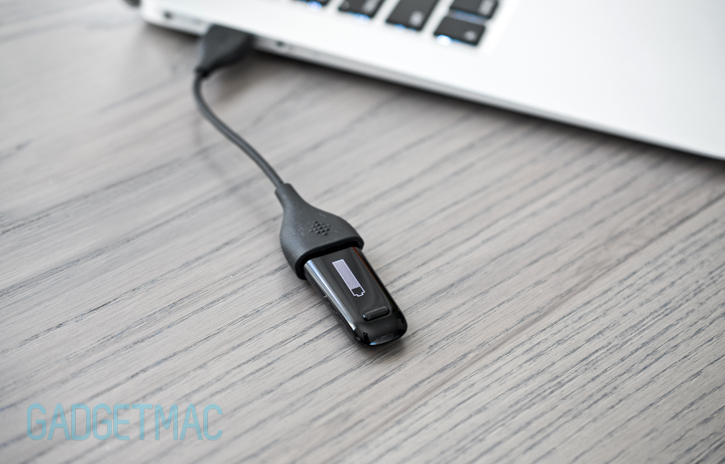
Battery life on the other hand has been really terrific, nearing the advertised 7 day battery life. The built-in rechargeable battery will quickly recharge to the brim in less than two hours when plugged into a USB port. Only when the One is plugged in and charging, is when it'll display a battery status meter. Alternatively you can check up on the remaining battery life via the Fitbit app or online thru your Fitbit account dashboard.
![]()
Like other fitness trackers of its kind, the Fitbit One is packed with gimmicky features that we quite frankly couldn't care less about. And neither would you. First on the list is the One's sleep tracking capability that when tucked on you wrist while you toss and turn in bed, should provide you with stats about how well you've slept at night along with a sleeping time frame, or pattern graph complete with your sleep quality score, number of sleep hours and the number of times you've woken up in the middle of the night. Because there's no way you can know this for yourself without the help of her majesty the One. And how exactly is this statistically nonsense designed to help you achieve a better future sleep is beyond us. Hence the gimmick name calling. Whichever method you choose to ride with, we have had a very user friendly and seamless experience with both Bluetooth pairing and wireless synchronization between the devices.

If you want to try sleeping with the Fitbit One, you'll need to strap on this thin piece of polyurethane wriststrap, which I must say wasn't as bad as I thought it would be and is actually quite comfortable to wear. There's a mesh window where you can visibly see the One's display and activate the sleep tracking mode. Because it doesn't do that for you automatically. And again, in the morning you'll have to remember to stop the tracker from its sleep log. You'll also benefit from the One's silent alarm which will vibrate in hoped of waking you and not anyone else up. Let's just say this is not a valuable method of using a vibrating alarm clock. The Fitbit One is simply not as effective and will stop vibrating after a few seconds. Setting the alarm is also done thru the online Fitbit dashboard unfortunately.

At the end of the day, we didn't find much good in Fitbit's $100 One wireless activity tracker. Tracking your daily activity is one thing, but serving you inaccurate results with a side of gimmicky features just isn't good enough. As much as we like the new sleek design, sharp display and ease of use, the least we expected was a functioning device that got its facts straight. Hopefully Fitbit is able to fix these issues with a new firmware update and pronto. Are you sensing another Up catastrophe in the making?
Update: Our commenters pointed out that our initial understanding of how the Fitbit One measures the amount of calories burned was incorrect. As it turns out, Fitbit One measures calories using more medically correct information than simply basing it off your step ratio. How much of this is accurate is difficult to know. But we're revising our initial bad rating to reflect the change brought to our attention. Fitbit has also issued an update to its iOS app shortly after our review went live, that now can let you sync and set up the One right from the app as well as setting silent alarms and firmware updating thru the app.
As it stands, while it doesn't score a perfect score on every advertised feature, we think the Fitbit One is one activity tracker that's worth test driving if you're looking to get motivated in your daily fitness oriented lifestyle by painlessly knowing how you perform statistically with a bright, easy to use visual display and wireless syncing. It's like having your very own high-tech Formula 1 pit crew, analyzing your performance data with cool gadgets that will ultimately aid you in the long-run. The $60 Fitbit Zip would be our second choice when looking for a more affordably priced wireless activity tracker, albeit a less fancy one but with all the important core features built-in.
